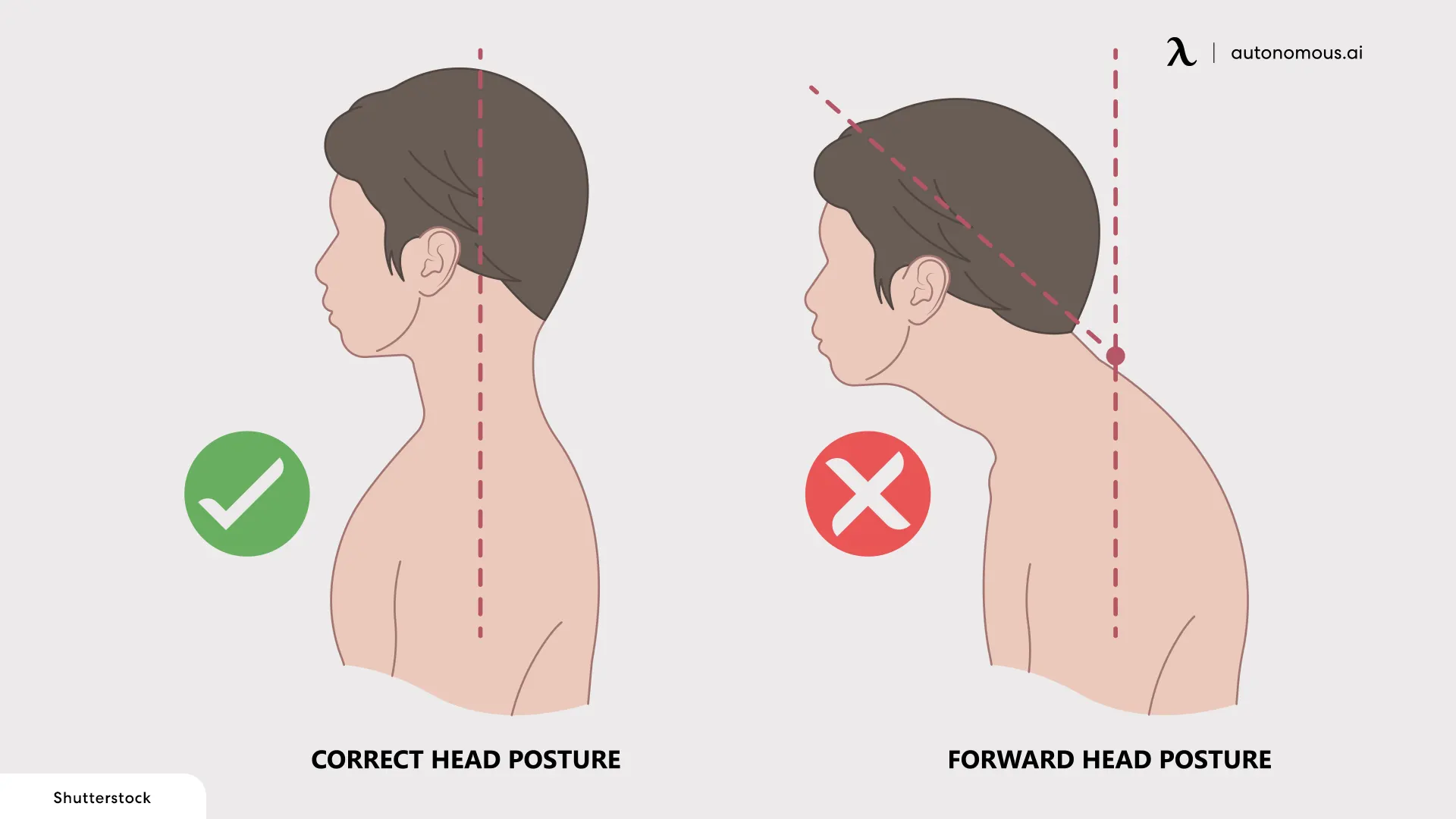
How Bad Posture at Work Causes Headaches and How to Prevent Them
Table of Contents
In today's fast-paced work environment, many of us spend hours sitting at desks, staring at computer screens. While this routine might seem harmless, it often leads to a common yet overlooked problem: headaches from bad posture. Understanding the connection between posture and headaches can help you take preventive measures and improve your overall well-being.
Can Bad Posture Cause Headaches?
Yes, bad posture can indeed cause headaches. When you sit or stand with poor posture, it puts unnecessary strain on your muscles and spine, particularly in the neck and shoulders. This strain can lead to tension headaches, which are the most common type of headache caused by bad posture. The tension results from the muscles being overworked and becoming tight, leading to discomfort that radiates to your head.
How Does Bad Posture Cause Headaches?
Poor posture can affect your body in several ways, contributing to headache pain:
1. Neck and Shoulder Tension
Slouching or hunching over your desk can cause the muscles in your neck and shoulders to become tight and fatigued. This tension can travel up to your head, resulting in a headache from posture.
2. Compressed Nerves
Bad posture can compress the nerves in your neck and upper back. This compression can cause pain that radiates from your neck to your head, leading to a headache caused by bad posture.
3. Reduced Blood Flow
Slouching or sitting with your head forward can restrict blood flow to your brain. This reduced circulation can contribute to headaches and overall fatigue.

Symptoms of Headaches from Bad Posture
Identifying headaches from bad posture involves recognizing specific symptoms:
- Pain in the Neck and Shoulders: This pain often precedes the headache and indicates muscle tension in these areas.
- Throbbing or Dull Headache: The headache can range from a dull, constant ache to a more intense, throbbing pain.
- Pain that Worsens with Activity: Moving your neck or shoulders, especially after sitting for long periods, can exacerbate the headache.
Preventing Headaches from Bad Posture
To prevent headaches caused by bad posture, it's essential to adopt better habits and make ergonomic adjustments at your workspace:
1. Ergonomic Workspace
Ensure your office chair, standing desk, and computer are set up to promote good posture. Your computer screen should be at eye level, and your chair should support your lower back. For more tips on finding the best chair for posture, check out this guide on office chairs with spine support.

2. Regular Breaks
Take short breaks every hour to stretch and move around. This helps relieve muscle tension and improve blood circulation.
3. Posture Awareness
Be mindful of your posture throughout the day. Keep your back straight, shoulders relaxed, and feet flat on the floor. If you spend a lot of time gaming, consider these tips to improve your gamer posture and maintain a healthy gaming posture.
4. Strengthening Exercises
Incorporate exercises that strengthen your core, neck, and shoulder muscles. Yoga and Pilates are excellent for improving posture and reducing muscle tension.
5. Stay Hydrated
Dehydration can exacerbate headaches, so ensure you drink plenty of water throughout the day.
Treating Headaches from Bad Posture
If you already have a headache caused by bad posture, consider the following treatments to alleviate the pain:
1. Rest and Relaxation
Take a break and rest in a comfortable position. Use a cold or warm compress on your neck and shoulders to reduce muscle tension.
2. Over-the-Counter Pain Relief
Non-prescription pain relievers like ibuprofen or acetaminophen can help alleviate headache pain.
3. Massage Therapy
A professional massage can target the tight muscles in your neck and shoulders, providing relief from tension headaches.
4. Physical Therapy
A physical therapist can design a personalized exercise and stretching program to address posture-related issues and prevent future headaches.
For those who spend a significant amount of time typing, maintaining proper typing posture is crucial. Additionally, using a chair posture corrector can help maintain proper alignment and prevent headaches.

FAQs
1. Can bad posture really cause headaches?
Yes, bad posture can lead to headaches by causing muscle tension and nerve compression in the neck and shoulders, which can radiate pain to the head.
2. What are the symptoms of headaches caused by bad posture?
Symptoms include neck and shoulder pain, a throbbing or dull headache, and pain that worsens with neck or shoulder movement.
3. How can I prevent headaches from bad posture?
Prevent headaches by setting up an ergonomic workspace, taking regular breaks, maintaining good posture, doing strengthening exercises, and staying hydrated.
4. What is the best posture to avoid headaches at work?
The best posture includes sitting with your back straight, shoulders relaxed, feet flat on the floor, and your computer screen at eye level.
5. What treatments are effective for headaches caused by bad posture?
Effective treatments include resting, using a cold or warm compress, taking over-the-counter pain relievers, getting a massage, and seeking physical therapy.
6. How often should I take breaks to prevent posture-related headaches?
Take a short break every hour to stretch and move around, which helps relieve muscle tension and improve circulation.
7. Can strengthening exercises help reduce headaches from bad posture?
Yes, exercises that strengthen your core, neck, and shoulder muscles can improve posture and reduce muscle tension, helping to prevent headaches.
8. Are there specific ergonomic adjustments that can help?
Yes, ensure your chair supports your lower back, your computer screen is at eye level, and your feet are flat on the floor to maintain good posture.
9. How does dehydration contribute to headaches from bad posture?
Dehydration can exacerbate headaches, so it's important to drink plenty of water throughout the day to stay hydrated and reduce headache frequency.
10. When should I see a doctor for headaches caused by bad posture?
If your headaches persist despite making ergonomic adjustments and trying treatments, consult a healthcare professional for further evaluation and guidance.
Conclusion
Understanding the link between bad posture and headaches is crucial for maintaining your health and productivity at work. By recognizing the symptoms and taking preventive measures, you can reduce the occurrence of headaches from bad posture. Remember, small changes in your daily routine can lead to significant improvements in your overall well-being. Prioritize good posture, and your body—and head—will thank you.
Get exclusive rewards
for your first Autonomous blog subscription.
Spread the word
You May Also Like





-7512dd9e-3510-42ed-92df-b8d735ea14ce.svg)


